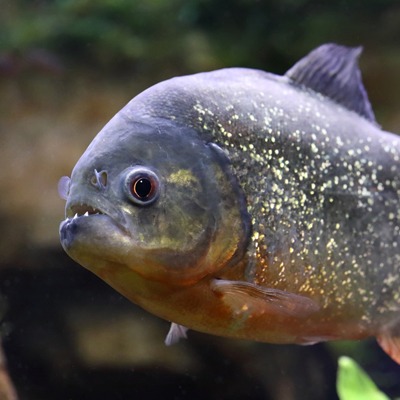
About Piranha
Piranhas are a freshwater fish known for their sharp teeth and aggressive, predatory demeanor. The most common of this species is the red-bellied piranha, which is characterized by its red underside, black spots near the gills, and silver flecked scales.
Habitat
This species is typically found in the freshwater rivers, lakes, and reservoirs of South America. In certain areas, they are also known to inhabit flooded forests, such as those found in the Brazilian Amazon.
Diet
While many believe this species to be carnivorous, they are known to feast on fruit, seeds, algae, and aquatic plants, leading to their classification of omnivorous.
Family Life
Piranhas breed during the rainy season, typically a two month period that varies depending on location. The female lays close to 5,000 eggs on vegetation, which is often a bowl-shaped nest built by the male.
Conservation Status
The conservation status of the Piranha is classified as not evaluated.Threats
- The piranha is not considered a threatened species, although collection and trade may pose a risk to their population in the future.
Facts about Piranha
Class:
Actinopterygii (ray-finned fishes)Order:
Characiformes (ray-finned fishes)Family:
Characidae (characins)Genus:
Pygocentrus (piranha)Species:
Pygocentrus nattereri (red-bellied piranha)Life Span:
20 years (wild) / 10 years (zoo)Size:
11 – 14 inches (28 – 33 cm)Weight:
Up to 7.7 pounds (3.5 kg)
Fun Facts
- Typically a solo-hunter, piranhas have been known to enter a “feeding frenzy,” where entire schools of the species will attack a large item of prey and strip it clean within minutes. This behavior contributes to their aggressive reputation, but these frenzies are not usually random and are more often the result of provocation or starvation.
- Love at first…circle? Piranhas will have a courtship display that involves swimming in circles.